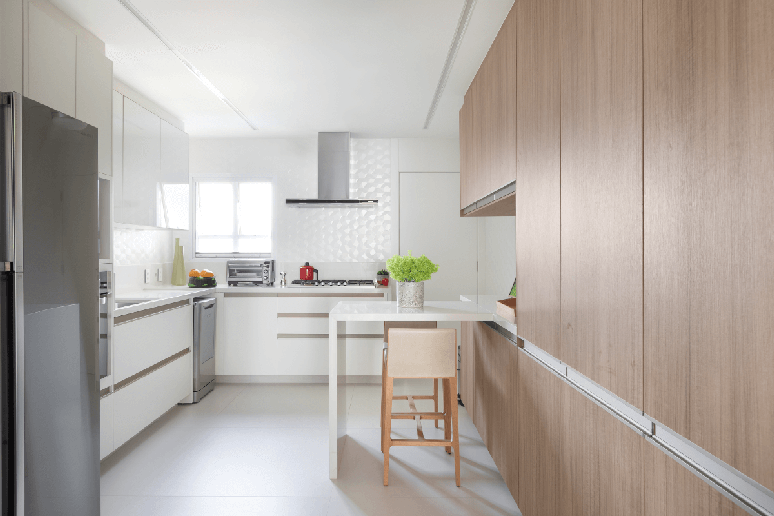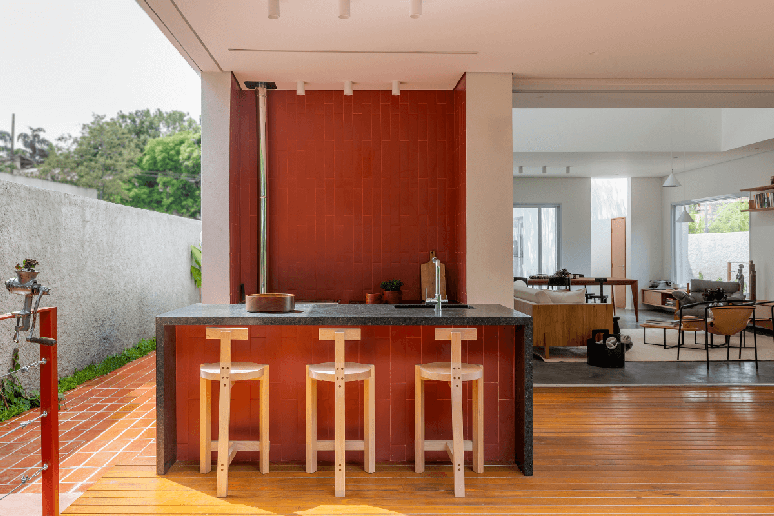See important aspects to consider before include this article in the architecture project
Versatile element full of possibilities, the bench has gained space in architectural projects by collecting functionality and aesthetics in a single point of the environment. More than integrating the kitchen design, redefines the use of space and adapts to different lifestyles, becoming a key to the integration between people and environments, for breakfast before leaving dinner at home or in the family.
According to the architect Raphael Wittmann, in front of Rawi Arquitura + Design, the bench can transform the way to use the rooms, since it brings together people even in a life really functional. “I like his adaptability to daily situations,” he says.
Below, take a look at how to insert the meal bench in the architectural project!
1. Functional support or project center
One of the main decisions when planning a dining bench is to define its role in space. It will be just a functional support or will share space with the sink and the Cookop? These assignments depend directly on the available area and the priorities listed by the residents.
2. Ergonomics: measures that make the difference
For a comfortable environment, ergonomics is decisive and the architect emphasizes that the measures should respect the human body and the way users interact. The daily false ceilings, for example, may vary between 90 and 110 cm in height, based on the type of seat chosen, and consider a reference of 25-30 cm high level between the work surface and the stool. “Therefore, the posture is adequate and the meal more comfortable,” says Raphael Wittmann.

3. Space per person and circulation areas
It is also essential to think of the single area, in order to guarantee the circulation Free behind the chairs or stools, especially in integrated kitchens or smaller apartments. Therefore, it is necessary to provide about 60 cm wide per person. “The most common errors are planning very narrow benches or not respecting circulation. The result translates into unease and difficulty using”, warns the professional.

4. Good materials
THE material It should dialogue with the rest of the project, but in general the benches are made of natural stones, such as granite and marble, quartz, porcelain, wood or ultra -set, among the other widely used options. “The key is to guarantee balance with aesthetics, resistance and good maintenance”, underlines Raphael Wittmann.
5. Lighting to value space
Since it is a prominent point inside the house, the bench deserves an appropriate lighting project. Out of suspense is one of the most common choices because, in addition to being functional, it provides a welcoming atmosphere.
The incorporated points or LED ribbons can integrate the scene, highlighting the area and strengthening the integration between the rooms. “A bench without the lighting The law loses much of its function and aesthetic“evaluate the architect.
By Emilie Guimarães
Source: Terra
Ben Stock is a lifestyle journalist and author at Gossipify. He writes about topics such as health, wellness, travel, food and home decor. He provides practical advice and inspiration to improve well-being, keeps readers up to date with latest lifestyle news and trends, known for his engaging writing style, in-depth analysis and unique perspectives.








